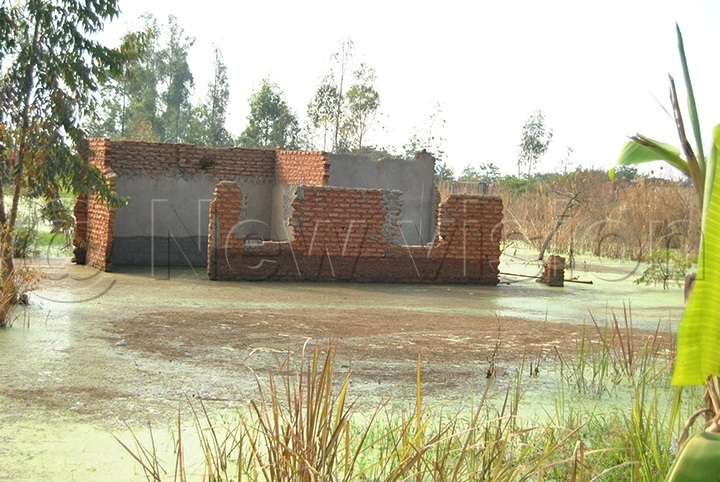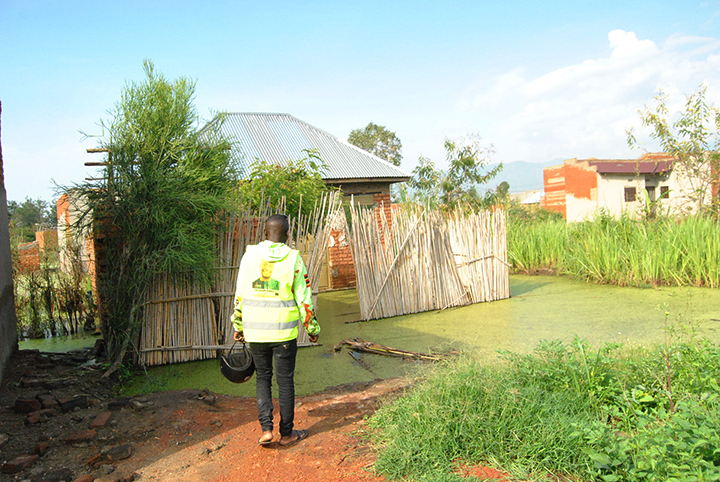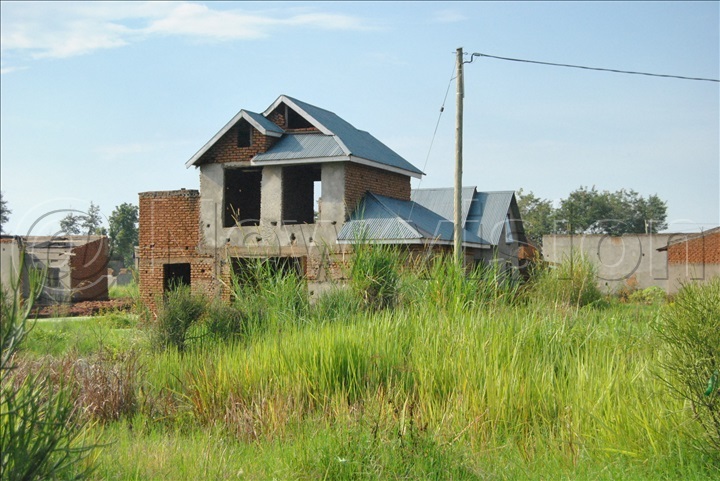Village deserted after heavy floods
Remah Namale, the assistant village chairperson, said the water levels have continued to rise and that with the onset of the October rains, many more houses could be affected.
FLOODS
Kanyangeya village in Nyamwamba division, Kasese municipality has for the last five months been deserted after River Nyamwamba flooded the area.
Whereas life is slowly normalising in most affected areas, the situation in Kanyangeya village is different.
Its former residents have pitched camp at the Kanyangeya Primary School compound.
Countless tents have been erected by the homeless residents of Kanyangeya village.
Over time, the water levels of River Nyamwamba have since stabilised and the river has in most parts of the district gone back to its course.
However, in Kanyangeya, the flood waters have not dried up and are increasing, and most houses are still submerged.

Remah Namale, the assistant village chairperson, said the water levels have continued to rise and that with the onset of the October rains, many more houses could be affected.
"The flood water levels in Kanyangeya have continued to rise, not due to fresh floods, but because of water sprouting from underground," Namale told New Vision.
Affected houses de-roofed
With no hope of life returning to normal, the owners of houses that were submerged have de-roofed them. Doors and windows have also been removed from most houses.
"We lost most of our household properties to the floods. So, some of us decided to de-roof our houses and sell the iron sheets for food and other essentials," Moses Kule, one of the affected residents, said.
Kule is a member of the over 250 households that are living in tents at Kanyangeya Primary School.

Wild animals take over Kanyangeya
Locals said wild animals such as hippos had taken over the abandoned village.
The hippos spend the entire day in the flood waters and only come out in the evening to feed.
"There are three hippos, one of which is young. For our safety, we have been advised not to move after 6:00pm," Wilfred Masereka, one of the residents, said.
A walk around the flooded areas, one can easily observe footmarks that are believed to be of wild animals.
Masereka said they always make noise and bang objects to scare away the hippos whenever they are seen advancing towards their camp.
Pontius Ezuma, the warden in charge of Queen Elizabeth National Park, where the hippos are suspected to have escaped from, said interventions are being made to ensure that the stray hippos do not endanger the homeless members of the community.

"Hippos like water, so it is possible that they could have been attracted to the flooded area," Ezuma said.
He said as a control measure, the park management intends to deploy some of its staff at Kanyangeya to keep an eye on the stray animals.
"Our staff will be sent to Kanyangeya to monitor the hippos. This is aimed at ensuring that the hippos do not get into contact with the community, which could lead to the loss of life," he said.
This, Ezuma said, would go on until an assessment on the relocation of the hippos is done.
Mosquitoes
Locals said the flood waters had become a breeding ground for mosquitoes.
Annet Mbambu, a mother of eight, said five of her children had in the last two months suffered from malaria.

"Ever since we relocated to the camp, the number of mosquitoes has increased," Mbambu said.
Yusuf Baseka, the Kasese district health officer, said his office, together with the Ministry of Health, had embarked on distribution of mosquito nets.
He also said the district entomology department is on a continuous surveillance aimed at controlling the breeding of mosquitoes.
Relief
Kasese municipality mayor, said they have asked the Government to permanently relocate the residents of Kanyangeya.
Kabyanga said keeping 250 households in a camp is not sustainable. Since their displacement, the Government, through the Office of the Prime Minister, has distributed relief items once.
The relief included maize flour, beans and tarpaulins.